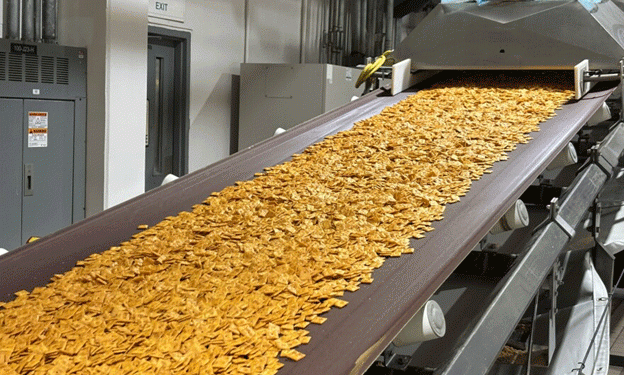The Secret Ingredient in Cheez-Its: North Carolina-Grown Wheat
When Americans reach for a box of Cheez-Its, few consider the grain behind the crunch. But in Cary, North Carolina, where one of two Kellanova bakeries is located, soft red winter wheat is a critical ingredient. Each day, 14 tanker trucks loaded with locally milled flour arrive at the bakery, ensuring the consistency and quality Cheez-It fans expect.
The Cary bakery employs around 700 people, working 12-hour shifts to turn ribbons of dough into perfectly baked squares, producing 8,000 pounds of Cheez-Its every hour. This bakery began life in the 1980s as a facility for sandwich crackers under Austin Quality Foods. Through acquisitions by Keebler and later Kellogg’s, the facility evolved into a Cheez-It production powerhouse—now under the snack-focused Kellanova brand.
North Carolina Wheat: Modest in Scale, Mighty in Purpose
While North Carolina is more famous for tobacco, sweet potatoes, and soybeans, it annually plants 400,000 to 500,000 acres of soft red winter wheat, according to Nikki Johnson, Director of the North Carolina Small Grain Growers Association.
Although Kansas dominates wheat production with 7.5 million acres annually (USDA), North Carolina’s contribution is no less important—particularly when it comes to local, specialty end-uses like Cheez-Its.
However, wheat production in the state is under pressure. With falling wheat prices and rising input costs, especially for fertilizers, farmers are shifting toward more profitable crops like early-planted soybeans. Wheat prices have dropped significantly—from nearly $10 per bushel in the wake of the Russia-Ukraine conflict to just $5.23 per bushel today. This economic shift is prompting growers to reassess their rotations and crop choices.
Local Sourcing Matters—To Quality and Community
According to bakery director Steve Surovec, sourcing wheat locally isn’t just about convenience—it’s about quality control. Different regions produce wheat with different baking characteristics, and the consistency of North Carolina’s soft red winter wheat allows for a more stable product. “If we can buy it locally, it’s a great partnership,” he said.
That partnership is not only technical but also deeply community-rooted. Generations of workers at the Cary bakery have built careers and raised families there. With a potential $36 billion acquisition of Kellanova by Mars Incorporated on the horizon, changes may come—but the commitment to quality remains.
The Cheez-It story is a perfect example of how local agriculture connects directly with national food brands, creating value for both farmers and consumers. As wheat prices and crop choices shift, it will be important for regional stakeholders—from growers to processors to retailers—to continue investing in resilient, locally grounded supply chains. For North Carolina wheat farmers, staying part of America’s snacking culture might just come down to smart rotation planning, strong buyer relationships, and a little bit of good weather.
Error





